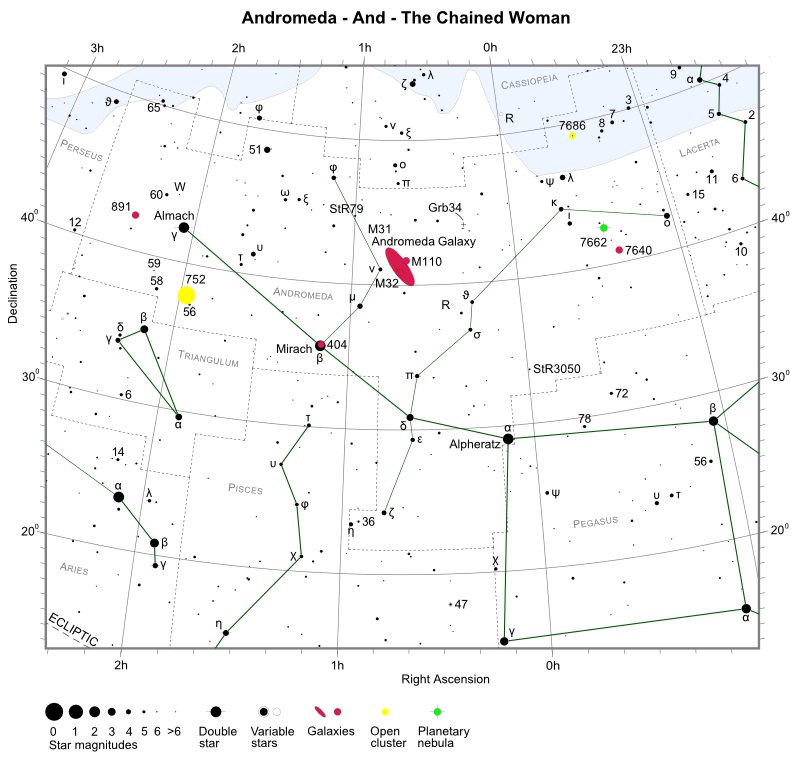Mirach's Ghost. Image Credit & Copyright: John Chumack
As you can see, these two images of Mirach and Mirach's Ghost look very different. One is much redder than the other. One displays much longer och brighter star spikes of Mirach than the other. Kent Wood's image makes Mirach sparkle and blaze like a combination of a yellow-white diamond and a searchlight.
The orientation of the two images is also different. It is the orientation of John Chumack's image that is the "correct" one, or at least the conventional one.
As for Mirach's Ghost, isn't it funny that its NGC number is 404, like an error message?
And speaking of NGC 404...
Would you look at that!!! Two different images of Mirach's Ghost, NGC 404, one where it looks like a galactic pumpkin

and one where it looks like a galaxy!!!
Of course NGC 404 isn't as orange as a pumpkin in space, and Mirach isn't as red as it seems to be in today's APOD.
But see here what NGC 404 looked like when NASA's now defunct ultraviolet-detecting space telescope GALEX took a peek at it:
What's that blue ring? Well, take a look at that Alchetron picture of NGC 404, and I think you can see the blue stars there. They seem to be very widely scattered in an extremely loose ring, and the dust that we can see near the nucleus of NGC 404 seems to have no connection with the scattered blue stars. They are probably rather modest stars of spectral classes A and late B, like Sirius, Vega and Regulus.
And by the way, where is Mirach in the GALEX image? Well, can you see that unremarkable yellow star to the lower left of NGC 404, at 7 o'clock? That's Mirach. It looks so small because GALEX only detected ultraviolet light, and Mirach is very faint at shorter wavelengths.
And what about the "true" color of Mirach? Well, think of it like this. Mirach is considerably paler in color than Betelgeuse. So if Betelgeuse isn't that red, then Mirach most certainly isn't.
But why don't you go out and take a look for yourself?
Ann
 Mirach's Ghost
Mirach's Ghost




